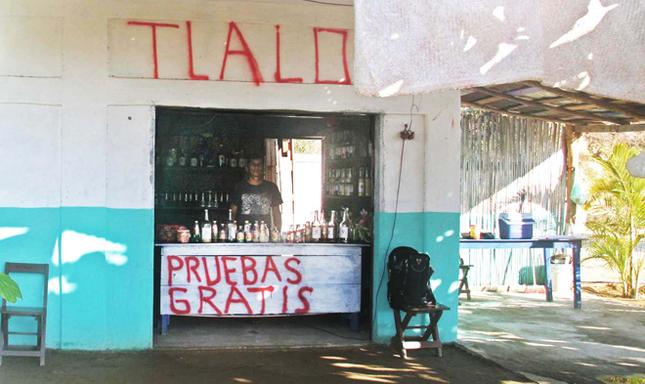Cocktail of the Month: Mezcal Margarita
By • April 24, 2013 0 3046

Anyone who has ever been to Mexico has probably been exposed to tequila. Whether it was a watered-down margarita made with low-grade liquor and sour mix at an all-inclusive resort or a glass of quality handcrafted anejo at a high-end lounge, tequila and Mexico seem to go hand–in-hand.
What many outsiders don’t know is that in addition to tequila, Mexico has another similar spirit, and that depending on what state you’re in, is often the more popular option. This sister spirit is mezcal, which is often confused with tequila.
Most people’s exposure to mezcal in the States is limited. If you’ve ever drunk a bottle of “tequila” with a worm in the bottom, you’ve tasted mezcal. The worm is a marketing gimmick which is added to exported bottles. It is rarely sold that way in Mexico.
While I was traveling through the Mexican state of Oaxaca earlier this year, I had a chance to sample many varieties of mezcal.
Both mezcal and tequila are both distilled from fermented agave juice, but the preparation of these spirits is quite different. They are dis- tilled in different regions – tequila in the state of Jalisco, while mezcal is made further south with the majority of it hailing from Oaxaca. Tequila is made from only one kind of agave –blue agave. Mezcal is made from various types.
Mezcal is produced from the heart, or the pina of the agave plant. The pinas are cooked an earthen oven for about three days. This underground baking imparts a smoky flavor. The pinas are later mashed and left to ferment. The distilled liquid is later collected and aged in barrels.
Small producers, using recipes passed down from one generation to the next, make most mezcals. Because of it hand-crafted nature, one can find a variety of flavor and complexity. In Oaxaca, many brands are never sold outside the area where they were produced.
In small villages it is not uncommon to find people distilling and selling mezcal from their homes. These are often sold in recycled tequila bottles with hand-painted labels.
While staying at the laid-back beach haven of Zipolite, I watched one day when as the “mezcal” truck made a stop on the town’s only paved street. Locals formed a queue at back of the truck with empty containers waiting and have them filled. Now, that’s the type of food truck I’d like to see in D.C.!
The taste of mezcal can differ widely as many producers add flavoring agents such as cinnamon, or slices of apple, pineapple or other tropical fruits to the mash, which impart a slight, subtle flavor. (Nowhere near the powerful taste of the mostly artificially flavored spirits popular in the U.S.) Often, at the end of the distillation, a piece of the flavoring agent is added to the bottle. For example, when I bought mezcal distilled with chobocano, the bottle contained seeds from the fruit. Another common practice is adding a piece of the agave leaf to the bottle.
The quality of mezcal also widely varies. The age of both is measured the same way. Either can be made from 100-percent agave or a majority agave mixed with other ingredients. A white or clear liquid indicates a spirit with little aging, while dark un-aged liquor with added coloring is called dorado.
Mezcal or tequila that has been aged between at least two months to a year in a barrel is called reposado while anything aged over a year is anejo. Some of the best are aged from 2-4 years.
The biggest difference between mezcal and tequila is its distinctive smoky favor, almost akin to smoky single malt scotch. Mezcal’s alcoholic proof is generally stronger than tequila, which is usually watered down to conform to the 80-proof standard in the States.
While most Mexicans prefer to drink mezcal straight, I found it to be a stimulating alterna- tive to a tequila-based margarita. The strong smokiness works as an excellent complement to the tart lime.
In the U.S., the most popular brand of mezcal is Monte Alban, but if you have access to a quality liquor store there are much better alternatives. I recommend either Sacacuento or Mezcal Del Maguey.?
MEZCAL MARGARITA
•1 1/2 oz mezcal?
•1/2 agave nectar?
•1 oz fresh lime juice
?Mix ingredients well in a cocktail shaker with ice. If desired, salt the rim of your glass. Pour contents, with ice, into glass. Garnish with lime wedge.

